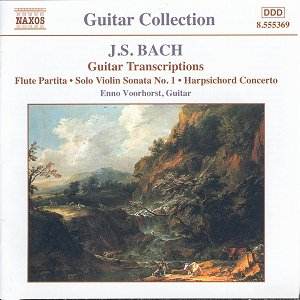 Composer: Johann Sebastian BACH (1685-1750)
Composer: Johann Sebastian BACH (1685-1750)
Works: The Musical Offering, The Art of Fugue
Performers: Le Concert des Nations, Hespérion XX, Jordi Savall
Release Date: November 2001
Label: ALIA VOX AV9819
Duration: 71:57, 45:28, 46:57 (3 CDs)
Availability: Crotchet £25.99, Amazon UK £23.99, Amazon US
In this meticulously curated boxed set titled Bach’s Testament, Jordi Savall presents two monumental works from the later years of Johann Sebastian Bach’s life—The Musical Offering and The Art of Fugue. This collection serves not only as an auditory feast but also as a poignant reminder of Bach’s unparalleled genius, particularly in the context of his final creative years.
Historical Context and Significance
Bach’s final decades saw a shift towards introspection and innovation, culminating in works that embody both a profound spiritual depth and an intricate intellectual rigor. The Musical Offering, conceived after Bach’s encounter with Frederick the Great, is a testament to his ability to weave complex counterpoint while simultaneously paying homage to his royal patron. The work comprises a series of ricercars, canons, and a trio sonata, each showcasing Bach’s extraordinary skill in developing thematic material through elaborate contrapuntal techniques.
In contrast, The Art of Fugue, a work left incomplete at his death, explores the very essence of fugal writing, articulating a vast landscape of contrapuntal exploration. This work stands as a crowning achievement in the canon of Western music, inviting numerous interpretations and performances.
Performance Analysis and Interpretation
Savall’s approach to The Musical Offering with Le Concert des Nations is commendable. The ensemble, comprising eight adept musicians, delivers an interpretation that balances clarity of texture with the emotional gravitas intrinsic to Bach’s writing. The recording benefits from a meticulous engineering process, allowing each instrument to resonate with precision in the acoustic space of Chateau de Cardona. The transparency of sound enhances the listener’s appreciation of the intricate canon structures, particularly in the ricercar a 3, where the interplay between voices is executed with a refined sense of dialogue.
However, it is in The Art of Fugue that Savall’s choices raise more complex questions. The decision to utilize a consort of viols, complemented by instruments such as cornett and bassoon, may be seen as a provocative reinterpretation. While the viols contribute a warm, sonorous quality, there is a lingering sense that this instrumentation strays from the intended brilliance of Bach’s original conception, which would have likely favored a keyboard instrument. Compared to notable recordings by the likes of the Amsterdam Baroque Orchestra under Ton Koopman or the renowned harpsichord renditions by Gustav Leonhardt, Savall’s ensemble, though skillful, may lack the incisive clarity and vigor that violin or harpsichord arrangements can evoke.
Technical Observations and Recording Quality
The engineering of this set is, on the whole, superb. The producers have achieved a balance that allows the listener to discern the intricacies of counterpoint without overwhelming the ear with excessive reverberation. The spatial awareness created in the recording allows for a natural interplay among the instruments, particularly in the canonic sections of The Musical Offering.
However, during certain passages in The Art of Fugue, the lushness of the viols may lead to a sense of quaintness, potentially undermining the work’s profundity. For example, in the final fugue, where a sense of urgency and complexity should crescendo, the velvety sound of the viols can soften the dramatic impact, leading to a performance that feels more reflective than assertive.
Conclusion
Bach’s Testament is an ambitious endeavor that largely succeeds in its artistic aims, blending historical fidelity with contemporary interpretation. Savall’s commitment to exploring the nuances of Bach’s late works is commendable, and while his choices in The Art of Fugue may invite debate regarding instrumentation, they undeniably contribute to a fresh perspective on a familiar repertoire.
Ultimately, this collection stands as both a tribute to Bach’s extraordinary legacy and a fascinating exploration of the boundaries of interpretation. For listeners seeking a deeper understanding of Bach’s final masterpieces, this set provides a compelling, if not wholly definitive, experience that underscores the enduring relevance of Bach’s genius in the landscape of classical music.
